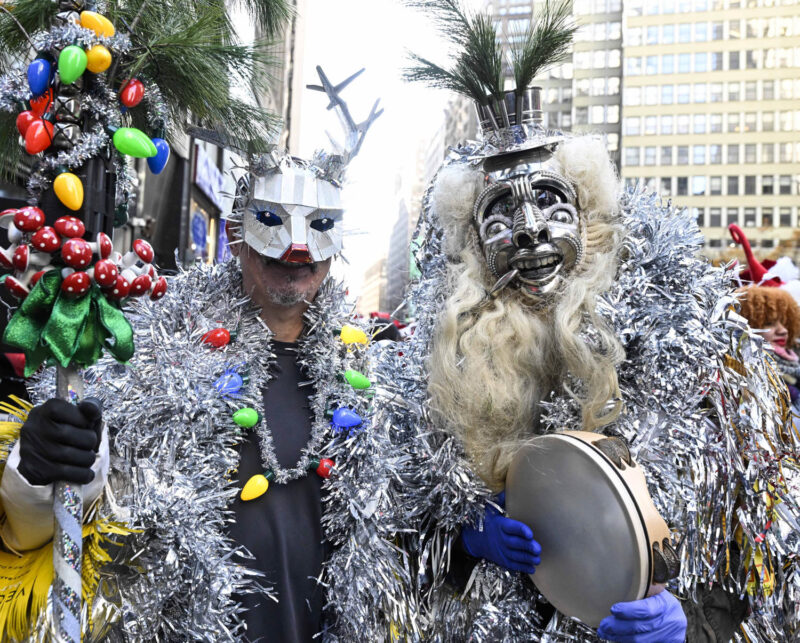
Ho, Ho, Hurl!
A brief, slightly weird history of SantaCon
It’s that time of year, when thousands of faux—and, er, festive—Santas roam the streets and earn their place on the Naughty List.
On a December day in 1974, 35 members of Solvognen, a Danish political theater group, dressed up as Santa and marched around Copenhagen, calling themselves “Christmasmen” or “The Santa Claus Army.” They visited factories, schools, supermarkets, and police stations, handing out candy and hot chocolate, asking people what they wanted for Christmas and—in the case of the factory—spoke on the high unemployment rate spurred by the oil crisis.
On the fourth day of their attempt to provoke people into questioning consumerist culture, they went into Magasin, Copenhagen’s largest department store, taking items directly off the shelves and handing them out to shoppers, explaining that today, everything is free.
The police arrived to arrest them, which resulted in the costumed Army being forcibly dragged out of the store and beaten in the street in front of horrified children and adults. And perhaps this is what you wish would happen to the participants in the annual New York City event we know as SantaCon.
Solvognen—which means “Chariot of the Sun” in Norse mythology—never repeated that stunt, not because of the beatings, but because they have one rule: “Never do anything twice.”
There were earlier incarnations of disruptive Santa craziness in the name of anti-consumerism: In the 1960s, an anarchist group in London known as King Mob dressed as Santas and gave out toys at Selfridges, leading to arrests. A New York Dadaist group called Black Mask posed as Santa-clad employees at Macy’s, gave out toys, and, in true Dadaist fashion, released cats and dogs in the store. Neither group has been credited with inspiring Solvognen, but a 1977 Mother Jones article by Ellen Frank about the group’s four-day Santa journey did inspire the modern day scourge we now know as SantaCon.
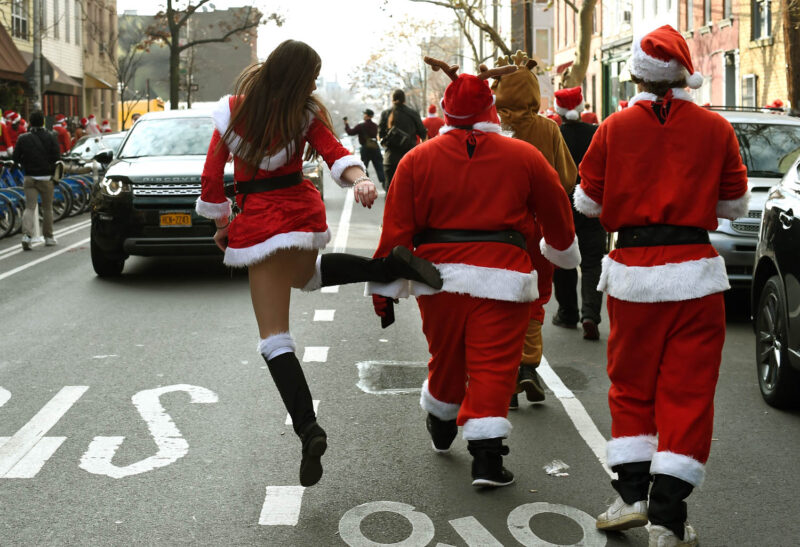
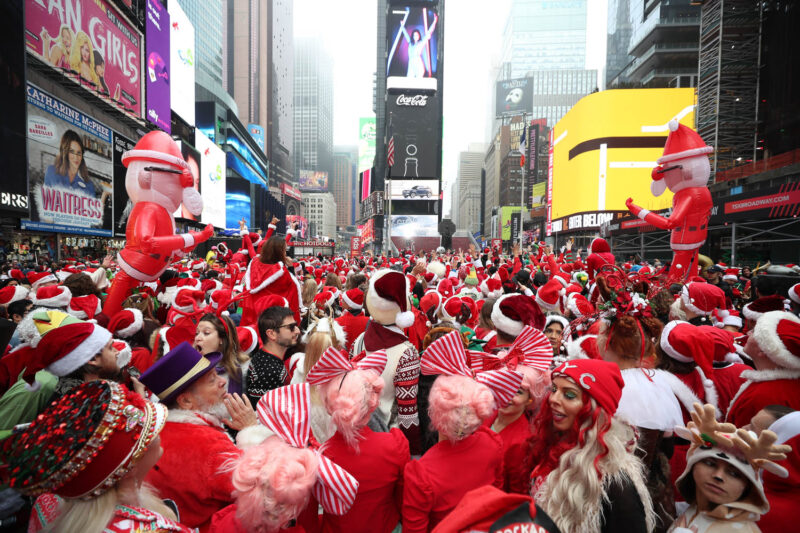
In 1994, a San Franciscan (improbably) named John Law organized a parade with 35 members of the Cacophony Society, a group of surrealist artists, who liked the idea of challenging traditional holiday expectations in this Danish fashion.
It was dubbed Santarchy, and wasn’t supposed to be repeated, but perhaps it was just too much fun so it was—in 1995—with 100 participants and at least two arrests. Soon, like the steady, worldwide spread of the coronavirus, the following year saw SantaCon in Seattle, Portland, and by 1998, Los Angeles and New York City. From there, it has afflicted Decembers in more than 50 countries worldwide, and counting.
These events are sometimes called The Red Menace, Santa Rampage or Santapalooza. But nit-pickers point out that one small problem with calling it SantaCon is that it isn’t a convention at all, with notable speakers, adoring fans, and booths selling merchandise. It is, unfortunately, all about cosplay, with people dressing up as Santa, horny reindeer, slutty elves, and many other tacky holiday iterations. It is also about getting very, very drunk while wandering, and often vomiting and urinating, en route from bar to bar.
By 2015, the debauched, sloppy state of affairs prompted Mother Jones to feature an article by Ben Dreyfus titled “SantaCon Is the Devil. We Apparently Created It. We Are So Sorry.”
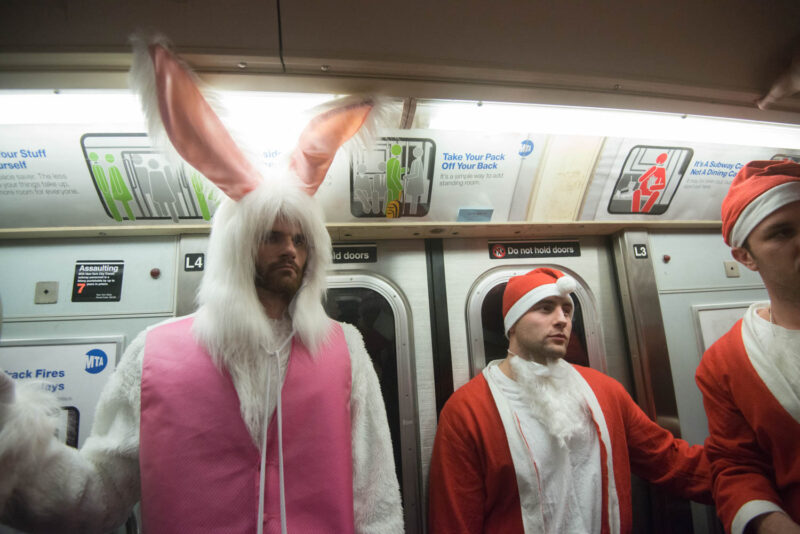
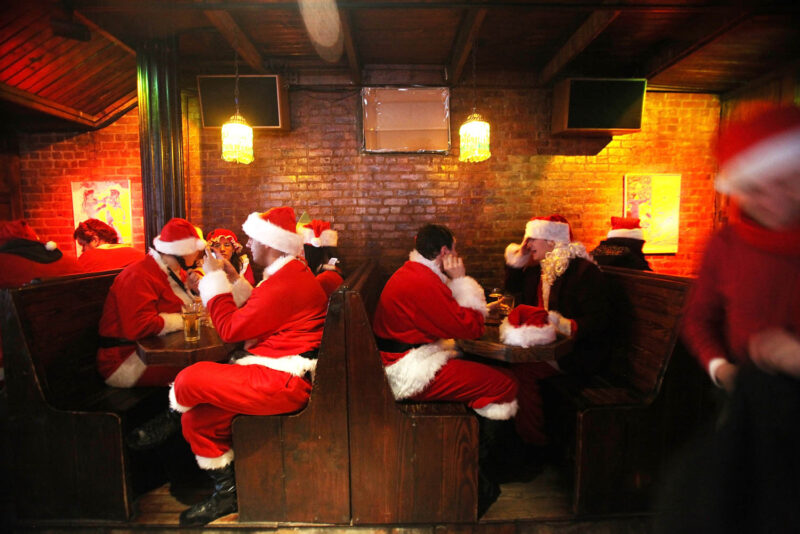
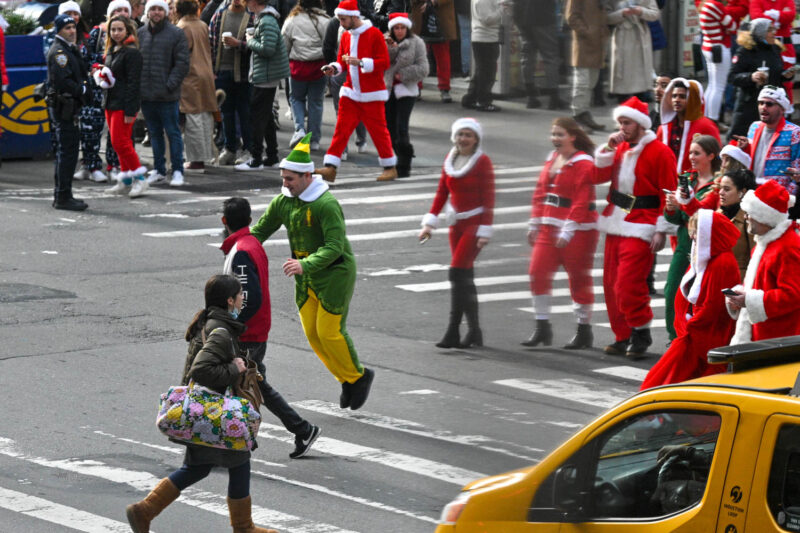
This year, whether you like it or not, SantaCon is happening on Saturday, December 9th. The dilemma for New York City bars is whether to embrace the costumed celebrants, and sell a lot more liquor (even if you have dozens of people arriving all at once, wanting drinks almost immediately), which means hiring more bartenders, and more security. Or, you can ban them and lose out on the increased revenue, but keep your staff, and regular customers, sane.
At Barcade, with three locations in New York City that feature 24 American craft beers, along with vintage video and arcade games, the management has instituted a “No Santas” rule for SantaCon. As bartender Karl Heitmueller, Jr., explained, “It just isn’t worth the inevitable hassles. One year, early in the shift, before security arrived, two Santas slipped in without my noticing. When I saw them, I said, ‘Sorry guys, we don’t allow Santas today.’” The two utterly stereotypical SantaCon participants—frat boys in furry red and white—were stunned. “You serious?” “Yup, sorry guys, you gotta go,” Heitmueller told them. “They huffed, and walked out, one of them holding out his arms in an odd mixture of hip hop attitude and frat boy aggression, saying in a loud voice, ‘Losing business, bro! LOSING BUSINESS!’”
And yes, this is the other compelling reason to allow SantaCon into your establishment: the hope that it will generate goodwill, so these revelers, and their many thirsty friends will return on other, non-Santa-themed days.

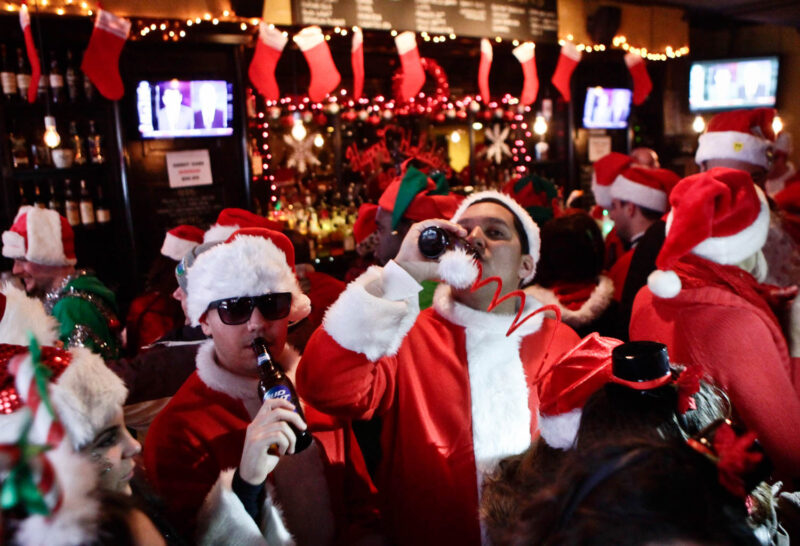
Fortunately, there is a new approach that will help those who wish to celebrate, and also those who wish to avoid the drunken mobs: The 65 or so bars, largely in midtown, who will be welcoming SantaCon made themselves known a week prior to the big day. So follow @SantaCon on Twitter (I mean, X) to get text message alerts.
You can also visit Santacon.nyc, RSVP on Facebook, and check SantaConMap.com. Most places are free, but some venues require a $15 (tax deductible!) cover charge, for charitable causes, DJs, and other perks, and give out a SantaCon pendant to get you in the doors.
Jeffrey Garcia, the new director of New York City’s Office of Nightlife could not be reached for comment. Then again, since SantaCon runs from 10:00 a.m. until 8:00 p.m. it’s not strictly speaking a “nightlife” event—and perhaps Garcia doesn’t want to give all the revelers any ideas.
Hero photo by Fatih Aktas/Anadolu Agency via Getty Images



